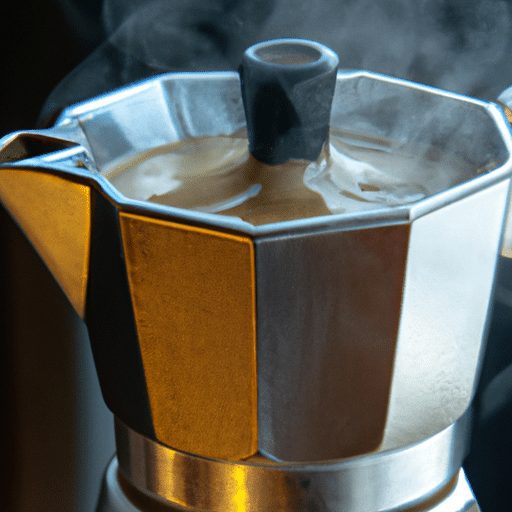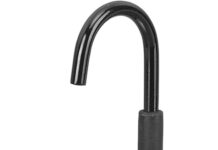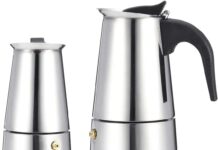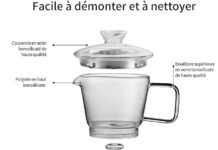Calling all coffee enthusiasts! If you’ve ever wondered which types of coffee work best with a Bialetti Moka pot, we’ve got the answers for you. Whether you’re a fan of bold flavors or prefer a smoother taste, we’ll explore the different coffee options that will elevate your Moka pot brewing experience. Get ready to discover the perfect cup of joe that will leave you craving for more!
Choosing the Right Coffee Beans
When it comes to brewing coffee in a Bialetti Moka pot, choosing the right coffee beans is key to achieving a delicious and satisfying cup of coffee. There are a few factors to consider when selecting coffee beans for your Moka pot brewing experience.
Arabica vs. Robusta
Arabica and Robusta are the two main types of coffee beans used for brewing coffee. Arabica beans are known for their delicate flavors, lower caffeine content, and smoothness. On the other hand, Robusta beans are bolder in flavor, higher in caffeine, and often have a stronger and more robust taste.
For the Moka pot, both Arabica and Robusta beans can be used. However, most coffee enthusiasts recommend using Arabica beans for a more balanced and smoother cup of coffee. The Moka pot brewing process tends to extract oils and flavors more intensely, so the delicate flavors of Arabica beans can shine through beautifully.
Whole Beans vs. Ground Coffee
Another important consideration is whether to use whole beans or pre-ground coffee for your Moka pot. Whole beans have the advantage of retaining their freshness and flavor for a longer period of time. They can be ground right before brewing, ensuring maximum freshness and aroma.
On the other hand, pre-ground coffee offers convenience and saves time. However, it is essential to choose a reputable brand that freshly grinds the coffee and packages it in a way that preserves its flavor and aroma.
If possible, it is recommended to opt for whole beans and grind them just before brewing in order to capture the true essence of the coffee.
Freshness of the Coffee Beans
No matter whether you choose Arabica or Robusta beans, whole beans or ground coffee, freshness is crucial for a great cup of coffee. Coffee beans start losing their flavor and aroma shortly after they are roasted. Therefore, it is advisable to choose coffee beans that have been roasted recently.
Look for coffee beans with a roast date mentioned on the packaging and try to consume them within a month of that date. Investing in airtight containers to store your coffee beans can also help prolong their freshness.
Remember, fresher coffee beans will yield a more vibrant and flavorful cup of coffee in your Moka pot.
Roast Level
Roast level plays a significant role in the taste profile of the coffee brewed in a Moka pot. There are four main roast levels to consider: light roast, medium roast, dark roast, and Italian roast.
Light Roast
Light roasted coffee beans retain more of their original characteristics, resulting in a bright and acidic cup of coffee. The flavors tend to be more nuanced and delicate, making light roast coffee a great choice for those who prefer a milder and more subtle coffee experience.
Medium Roast
Medium roast coffee strikes a balance between the bright acidity of light roast and the deeper flavors of dark roast. It offers a well-rounded cup with balanced flavors, often exhibiting notes of chocolate, nuts, and caramel. This roast level is ideal for those who enjoy a more medium-bodied and flavorful coffee.
Dark Roast
Dark roast coffee beans are roasted for a longer duration, resulting in a bold and rich flavor profile. The beans have a smoky, caramelized taste, with less acidity. Dark roast coffee brewed in a Moka pot can offer a more robust and intense coffee experience, perfect for those who prefer a stronger cup of coffee.
Italian Roast
Italian roast is the darkest level of roast, characterized by its shiny, almost oily appearance. This roast level produces a strong and bitter flavor, often preferred in traditional Italian espresso. While Italian roast coffees can be brewed in a Moka pot, it is important to note that the resulting cup may be exceptionally intense and require some dilution with hot water.
Experimenting with different roast levels can be an exciting way to find the perfect balance of flavor that suits your taste buds when brewing with a Moka pot.
Grinding Coffee for Moka Pot
Grinding the coffee beans to the correct coarseness is crucial for a successful brewing experience with a Moka pot. The aim is to achieve a consistency that allows for optimal extraction of flavors without resulting in a bitter or over-extracted cup of coffee.
Coarseness of the Grind
For brewing with a Moka pot, the ideal grind size is slightly coarser than what is used for espresso machines, but finer than what is typically used for drip coffee. The grind should have a texture resembling table salt.
A finer grind can result in over-extraction, leading to a bitter and harsh taste. On the other hand, a coarser grind may result in an under-extracted cup with weak flavors.
It is highly recommended to invest in a good-quality burr grinder, as it provides a consistent grind size and allows for more control over the coarseness. Blade grinders, although more affordable, can produce inconsistent grind sizes, which can negatively affect the taste of the coffee.
Burr Grinder vs. Blade Grinder
A burr grinder crushes the beans between two abrasive surfaces, resulting in a more uniform grind size and better control over the coarseness. The consistency of the grind ensures an even extraction and helps to achieve a balanced and delicious cup of coffee.
On the other hand, a blade grinder chops the beans using rotating blades. While this type of grinder is more affordable and widely available, it can produce inconsistent grind sizes, leading to uneven extraction and potentially a less satisfying coffee experience.
Investing in a burr grinder may require a higher initial cost, but it can make a significant difference in the quality of your Moka pot coffee.
Water Quality and Temperature
Aside from choosing the right coffee beans and grinding them correctly, the quality of water and its temperature play a crucial role in the brewing process. Paying attention to these factors can enhance the flavor and aroma of your Moka pot coffee.
Using Filtered Water
Using filtered water is highly recommended for brewing coffee in a Moka pot. Tap water often contains impurities and minerals that can alter the taste of the coffee and affect the overall quality. Filtered water, free from any unwanted tastes or odors, allows the natural flavors of the coffee to shine through.
Optimal Water Temperature
The water temperature during the brewing process is another essential factor to consider. It is important to heat the water to the right temperature to ensure proper extraction.
The ideal water temperature for the Moka pot brewing method is around 195°F to 205°F (90°C to 96°C). Water that is too hot can result in over-extraction, leading to a bitter taste, while water that is too cool may result in under-extraction and a weak cup of coffee.
Using a thermometer or an electric kettle with a temperature control feature can help ensure the water is heated to the optimal temperature.
Dos and Don’ts for Moka Pot Brewing
To achieve the best results when brewing coffee in a Moka pot, it is important to follow a few dos and don’ts to optimize the flavor and avoid any potential pitfalls.
Avoid Preheating the Water
Contrary to other brewing methods, preheating the water in a Moka pot is not recommended. The brewing process relies on pressure created by the steam generated from the water, and preheating can result in excessive pressure and potential safety hazards.
Instead, start with room temperature water and allow the Moka pot to heat gradually on the stovetop.
Don’t Overfill the Coffee Basket
When filling the coffee basket of the Moka pot, it is important not to overfill it with coffee grounds. Overfilling can result in excessive pressure build-up and can even cause the pot to clog, preventing proper extraction.
Depending on the size of your Moka pot, a general rule of thumb is to fill the basket with enough coffee grounds to reach just below the rim. This ensures proper extraction and avoids any unpleasant surprises.
Avoid Tamping the Coffee
Unlike espresso machines, it is crucial not to tamp or compact the coffee grounds in the Moka pot’s coffee basket. Over-packing the coffee can restrict the flow of water, resulting in prolonged brewing time and potentially bitter or over-extracted coffee.
Simply level the coffee grounds in the basket without applying any pressure. This allows for proper water flow and a more balanced extraction.
Don’t Overheat the Moka Pot
During the brewing process, it is essential to monitor the heat and prevent the Moka pot from overheating. Overheating can cause the coffee to burn, leading to a bitter and unpleasant taste.
Once the coffee starts to flow into the top chamber, immediately remove the Moka pot from the heat source. This ensures the brewing process is complete without exposing the coffee grounds to excessive heat.
Popular Coffee Roasts for Moka Pot
The Moka pot brewing method is versatile and can accommodate a wide range of coffee roasts. Each roast level offers a unique flavor profile, allowing coffee enthusiasts to explore and discover their favorites.
Light Roast
Light roast coffee offers a delicate and nuanced flavor profile when brewed in a Moka pot. Known for its bright acidity and complex aromas, light roast coffee can provide a refreshing start to your day. The Moka pot brewing process accentuates the nuanced flavors, creating a well-balanced and flavorful cup of coffee.
Medium Roast
Medium roast coffee strikes a perfect balance between the bright acidity of a light roast and the boldness of a dark roast. The flavors are typically more rounded and well-developed, with notes of chocolate, nuts, and caramel. Brewing medium roast coffee in a Moka pot can result in a medium-bodied and satisfying cup of coffee, appealing to a wide range of tastes.
Dark Roast
Dark roast coffee is known for its bold, smoky, and rich flavors. The longer roasting process caramelizes the sugars in the beans, resulting in a deep and intense taste profile. When brewed in a Moka pot, the oils and intense flavors are extracted, producing a robust and full-bodied cup of coffee. Dark roast enthusiasts can appreciate the Moka pot brewing method for its ability to highlight the unique characteristics of these beans.
Italian Roast
Italian roast is the darkest level of roast, characterized by its shiny and oily appearance. This roast level produces a strong and bitter flavor, often preferred in traditional Italian espresso. While Italian roast coffee can be brewed in a Moka pot, it is important to note that the resulting cup may be exceptionally intense and require some dilution with hot water for a more balanced taste.
Single Origin vs. Blends
When exploring the world of coffee for your Moka pot, you will come across both single origin coffees and blends. Each option offers a different coffee experience, and understanding the differences can help you make an informed decision.
Exploring Single Origin Coffees
Single origin coffees are sourced from a specific region or farm, allowing for the unique characteristics of that particular coffee to shine through. Each origin has its own distinct flavor profiles, influenced by factors such as soil, climate, and cultivation practices.
By opting for single origin coffees, you have the opportunity to explore and appreciate the different nuances of coffee from various regions. This can be an exciting journey for coffee enthusiasts who enjoy discovering the terroir and specific flavor notes associated with each origin.
Benefits of Coffee Blends
Coffee blends, as the name suggests, are a combination of multiple coffee beans from different origins. Blending allows roasters to create a specific flavor profile by combining beans with complementary characteristics. The goal is to achieve a balanced and consistent cup of coffee that appeals to a wider audience.
Blends often offer a more well-rounded taste, as the flavors from different origins interact and harmonize. They can provide a reliable and familiar cup of coffee that consistently meets your taste preferences.
Whether you choose to explore single origin coffees or enjoy the consistency of coffee blends, both options can be wonderful choices for brewing in a Moka pot. It ultimately depends on your personal preferences and desire for exploration or consistency in your coffee experience.
Flavor Profiles for Moka Pot Coffee
The Moka pot brewing method has a unique ability to extract rich flavors and aromas from the coffee beans, resulting in a wide range of flavor profiles. Here are some common flavor profiles found in Moka pot coffee:
Balanced and Smooth
A well-balanced and smooth cup of Moka pot coffee offers a harmony of flavors, with no particular note overpowering the others. This flavor profile often showcases the natural sweetness of coffee, with subtle hints of chocolate, caramel, and nuts. Balanced and smooth coffee is a crowd-pleaser and can be enjoyed by anyone seeking a satisfying and comforting cup.
Nutty and Chocolatey
If you enjoy the taste of nuts and chocolate in your coffee, the Moka pot brewing method can deliver a delightful experience. The extraction process highlights the nutty and chocolatey flavors, creating a rich and indulgent cup of coffee. This flavor profile complements well with a touch of sweetness, making it an excellent choice for those who prefer a more decadent and dessert-like coffee.
Citrusy and Bright
For those who appreciate a refreshing and vibrant cup of coffee, a citrusy and bright flavor profile can be a fantastic choice. The Moka pot brewing method can capture the bright acidity and citrus notes, resulting in a zesty and invigorating cup. This flavor profile is ideal for those who prefer a more tangy and lively coffee experience.
Bold and Intense
If you crave a strong and intense cup of coffee, the Moka pot can deliver the boldness you desire. The brewing process and the extraction method allow for a fuller extraction of flavors, creating a robust and powerful cup. This flavor profile is often associated with dark roast coffees, which offer a high caffeine content and a deep, smoky taste.
The versatility of the Moka pot allows for experimentation with different coffee beans to find the flavor profile that resonates with your taste preferences. Whether you enjoy the balance, the indulgence, the vibrancy, or the boldness, the Moka pot can unlock a world of flavors.
Specialty and Gourmet Coffees
While many coffee enthusiasts have heard of specialty and gourmet coffees, understanding the unique characteristics of these coffees and their suitability for a Moka pot can enhance your brewing experience.
Ethiopian Yirgacheffe
Ethiopian Yirgacheffe is a renowned specialty coffee known for its vibrant and complex flavors. These beans are often described as having bright floral and citrus notes, along with a delicate sweetness. Brewing Ethiopian Yirgacheffe in a Moka pot can intensify the flavor profile, creating a remarkable cup of coffee with distinct floral and fruity undertones.
Colombian Supremo
Colombian Supremo is another popular choice for Moka pot brewing. Colombian coffees are cherished for their well-balanced flavor profiles, often exhibiting nutty, caramel, and chocolate notes. The Moka pot can enhance these flavors, resulting in a smooth and comforting cup of coffee that provides a taste of Colombia’s coffee excellence.
Jamaican Blue Mountain
Jamaican Blue Mountain coffee is one of the most sought-after and highly regarded specialty coffees in the world. Grown in the Blue Mountains of Jamaica, this coffee is known for its mild flavor, bright acidity, and hints of citrus. Brewing Jamaican Blue Mountain coffee in a Moka pot can yield a delicate and refined cup, showcasing the unique characteristics that have made it a legend in the coffee world.
Kona Coffee
Hailing from the volcanic slopes of Hawaii, Kona coffee is known for its remarkable smoothness and low acidity. These beans produce a cup of coffee with a medium body and flavors of caramel, cocoa, and nuts. Brewing Kona coffee in a Moka pot can extract the flavors and aromas beautifully, creating a rich and satisfying cup that reflects the unique terroir of the Kona region.
Specialty and gourmet coffees offer an opportunity to explore the complexities and nuances of coffee flavors. Their unique characteristics can be further enhanced through the Moka pot brewing method, providing an exceptional coffee experience.
Tips for Brewing Delicious Moka Pot Coffee
Here are some tips to optimize your brewing process and ensure a delicious cup of Moka pot coffee every time:
Experiment with Ratios
Finding the right coffee-to-water ratio is essential for achieving a well-balanced cup of Moka pot coffee. Start with a ratio of approximately 1:15 (coffee to water), and adjust according to your taste preferences. Remember to maintain the correct grind size to avoid under or over-extraction.
Pre-Infusion Technique
Consider using a pre-infusion technique to bloom the coffee grounds before proceeding with the brewing process. This involves adding a small amount of hot water to the coffee grounds, allowing them to bloom and release their flavors for approximately 30 seconds, before adding the remaining water to complete the brewing process. Pre-infusion can enhance the overall flavor extraction.
Control the Heat
Maintaining a steady and controlled heat source is crucial when brewing with a Moka pot. Use a medium heat setting on the stovetop and monitor the brewing process closely. Avoid high heat, as it can lead to the coffee boiling and over-extracting, resulting in a bitter taste.
Clean the Moka Pot Regularly
Regular cleaning of the Moka pot is essential to prevent any residue buildup that can affect the taste of your coffee. Disassemble the pot after each use, rinse the different parts with warm water, and ensure all traces of coffee grounds are removed. Avoid using soap, as it can leave a residue behind.
Once a month, perform a deeper cleaning by soaking the disassembled Moka pot components in a mixture of water and mild dish soap. Use a soft brush to gently scrub the parts, then rinse thoroughly and dry before reassembling.
Maintaining a clean Moka pot not only ensures optimal flavor but also prolongs the lifespan of your brewing equipment.
Finding Your Favorite Coffee for Moka Pot
To find your favorite coffee for brewing in a Moka pot, taste testing different coffees and noting your preferences and adjustments is key. Take the time to explore different roast levels, origins, and flavor profiles.
Keep a coffee journal or record your tasting notes to document your findings. Note the coffee’s origin, roast level, flavor characteristics, and any adjustments you made to the brewing process. This record will help you identify patterns and preferences, allowing you to refine your choices and tailor your brewing experience to suit your taste buds.
Remember, what works for one person may not work for another. Personal preferences and taste profiles differ, so embrace the opportunity to customize your Moka pot brewing experience until you discover the perfect cup of coffee that pleases your palate.
In conclusion, brewing coffee in a Bialetti Moka pot offers a unique and flavorful coffee experience. By choosing the right coffee beans, grinding them correctly, considering water quality and temperature, following dos and don’ts, exploring different roast levels and origins, and experimenting with flavor profiles, you can unlock the full potential of your Moka pot. With a little bit of knowledge, practice, and patience, you’ll be able to brew delicious and satisfying Moka pot coffee that delights your senses. Happy brewing!




































